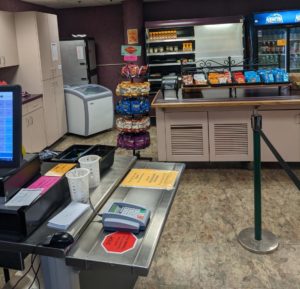Ala Carte is limited, but not for common reasons
December 9, 2022
At Owatonna High School, a la carte has been an enduring lunch-tradition for the student body by providing alternative food-options to students. The alternative food-options that are provided to students are breakfast foods, hot foods, desserts, snacks and cold beverages. In order to receive food-items from the a la carte, students must purchase the food-items at elevated prices. For most students, a la carte often supplements their lunches from the cafeteria. However, the a la carte recently has had less variety and quality food-options for students.
Students across OHS believe that a la carte has less variety and duly observed that the a la carte is oftentimes out of stock. Junior David Timmerman said, “Yes, it has gone down. Usually, you know they’re out of stock or something or they just don’t have stuff that they would have the day before that I would usually grab.” Through student opinion, a la carte has been significantly impacting the student body through a lack of variety and commonly out of stock sections. However, the issues with ala carte can’t be solely reflected upon the school, but rather the financial situation preceding from the pandemic for food services.
Free-lunch programs across the nation provided OHS with a greater expenditure for high-quality and varied food-options. According to the National Public Radio, the federal government made lunch free for 50.6 million public school students nationwide including Owatonna Public School students during the pandemic. The relieved costs provided to OHS ended on June 30 forcing the administration to refocus the school budget on alternative-food options and general meals. The refocused budget without federal expenditure led to the inability for OHS to provide a greater variety of food. This promotes the fact that the lack of federal expenditure has significantly impacted the variety and quality of the alternative food-options in the a la carte.
Students across OHS have observed the lack of variety and quality food-options in the ala carte through the observation that the a la carte is oftentimes out of stock and unreflective of student interests. Furthermore, the free-lunch program refocused the financial situation for OHS food services forcing the administration to decrease their expenditure for a la carte.

